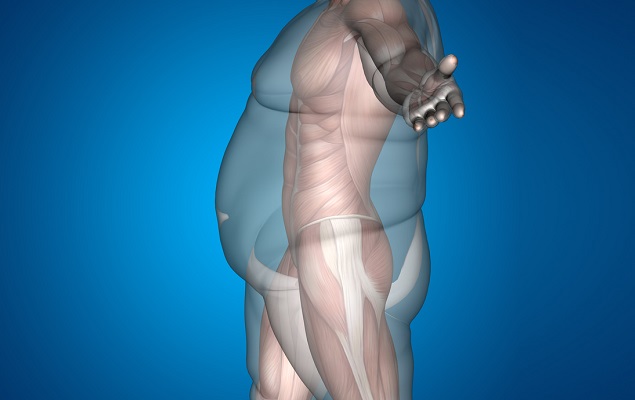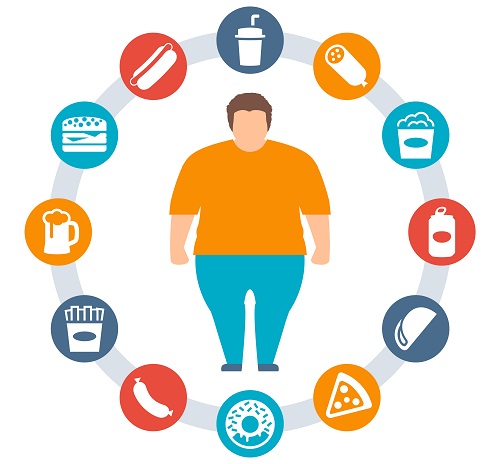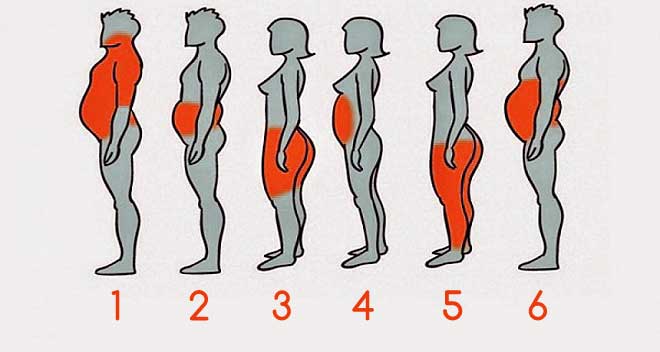
In an effort to better understand the disease of obesity, as well as find better potential treatments, researchers have decided that 6 different types of obesity can be categorized . It is hoped that being able to recognize each “type” of obese person would allow physicians to treat more effectively and with a more individualized approach.
The researchers examined data on 4,144 obese adults; all of the people had a body mass index (BMI) over 30 and a mean age of 56 years. The majority of the participants were women, at 58 percent, and the average BMI was around 34. The study was published in the public health journal and concluded that the body mass index could not be the only way to measure or identify obesity .
It was necessary to be able to classify each type of obesity into separate groups, in order to carry out a more detailed analysis of the causes that each one presented.
The 6 types of obesity
Being able to isolate the 6 different types of obesity that may occur, allows a specific treatment to be taken into account for each one of them, and not treating them all as a single overweight problem, understanding that each one can be caused by different factors.

1. Obesity from food
This type of obesity is the most common in the world. It is due to the excessive intake of food and sugar , especially the so-called "junk food", which is full of trans fats, whose ingredients are very difficult to digest, which encourages fat to accumulate in the body. In those who are obese in this way, they tend to have greater accumulation of fat in the upper extremities and upper body .
To solve this overweight, it is necessary to reduce the intake of these foods and apply exercise for at least thirty minutes a day. If obesity is advanced, it is extremely important that a qualified nutritionist can offer you a diet plan appropriate to your needs, to prevent obesity from continuing to increase, bringing with it a large number of health problems.
2. Obesity of the nervous stomach
Obesity of this type is caused by anxiety, stress, and depression . People who suffer from this problem generally receive a high sugar content either through candies, sweets and other similar products, in order to mitigate this emotional deficiency, you can read more about how depression can make you prone to consume refined foods. Those who suffer from this obesity have a greater volume of fat in the middle area of the body .
In this case, to prevent obesity from continuing, it is very important to try to control stress and anxiety, physical activity is an ideal complement to release stress, since at the same time it can help you lose weight.
3. Obesity due to gluten
It is mainly present in women and in the stages of adolescence, menopause and when a hormonal imbalance occurs . It is very important to avoid alcohol, stop smoking and be inactive for a long time, enjoying exercises with weights can be of great help to begin to reverse this type of obesity. Fat tends to accumulate in the middle area, legs and buttocks .
The weight gain associated with wheat consumption has little to do with the caloric content itself; conversely, gluten proteins disrupt endocrine and exocrine processes within the body. The main factor in obesity is gluten, not calories.
It is further recommended that those who are overweight, prediabetic, experiencing metabolic syndrome, or suffer from irritable bowel syndrome should avoid grains with gluten, especially wheat, to determine from experience if gluten is the underlying cause. of this condition.

4. Metabolic obesity
People who have a puffy belly like a balloon and who accumulate all the fat in this part of the body may suffer from atherogenic metabolic obesity . Excessive alcohol consumption can be one of the causes of this condition, serious respiratory problems can also occur with this type of obesity. This disorder usually presents as a " pregnant belly" , since in that area is where fat accumulates.
To treat this type of obesity it is necessary to eliminate fats, sugar, ( sweets, desserts, breads and cakes ) fried foods and junk food from the diet , it is necessary to add proteins in greater quantity, but this is a problem that requires a closer care from a specialist.
5. Hereditary obesity
It is a predominant genetic inherited obesity . Scientists highlight that genetic factors are responsible for obesity, since it has been shown that genes participate in the regulation of body weight, in how fat tissue is distributed in the body and also in the size and quantity of adipose cells.
Physical activity plays a very important role in the prevention of this type of obesity, along with a careful diet specifically if there are tendencies to be overweight. In general, in this type of obesity, fat tends to accumulate in the lower area of the body , causing both the hips and legs to fill with fatty tissue.
6. Obesity due to inactivity
In this type of obesity, the parts of the body that previously had been very active by physical exercises are usually affected. The key to eliminating this type of fat is not to allow a long period without eating, in this way the metabolism can be accelerated to be able to burn fat more quickly. In this type of condition, fat tends to accumulate in the abdomen region .
The risk factors for these types of obesity are wide and varied , they can involve eating disorders, mental illnesses such as depression and anxiety, behavior problems,; It can also involve physical disorders and disability, among many other factors. Being able to identify the type of obesity you suffer from could help find better treatments to reverse the problem and avoid serious consequences.
Share...


No comments:
Post a Comment